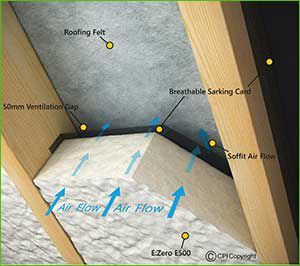Sealed attic construction by excluding vents to the exterior can be a good way to exclude moisture laden outside air from attic and may offer a more easily constructed alternative for air leakage control at the top of residential buildings.
Fully sealed attic.
Sealed and insulated the attic hatch helps keep heat in.
Ducts are located within an unvented crawl space.
A fundamental requirement of an unvented attic assembly is the use of air impermeable insulation on the underside of the unvented roof to prevent air infiltration and exclude airborne moisture from the attic.
Sealing attic hatch attic door to properly seal your attic hatch also known as an attic door or scuttle hole at a minimum you should apply weather stripping and ensure the attic side of the attic door is insulated.
It also prevents unwanted critters like raccoons from moving in.
A fully insulated attic helps your house regulate temperature and airflow.
Attic insulation shall be installed at all flat and sloped surfaces adjoining the conditioned space with less than 2 gaps voids and compressions and at levels that meet or exceed prescriptive levels specified by the 2012.
The attic space becomes indirectly conditioned as a result of the air leakage heat transfer and vapor diffusion through the ceiling.
Wall frames are hollow letting air flow freely between the walls and up into the attic.
Gaps in the attic or between the lower floors and the attic will let heated or cooled air escape to the great unconditioned outdoors making any insulation you add essentially useless.
The energy savings touted by unvented attics can be as high as 20.
Unventilated attics can help to mitigate energy loss through leaky ducts or ceiling fittings.
All joints cracks and penetrations in the wall air barrier shall be fully sealed with caulk foam or equivalent.
Find a diagram of common air leaks here here s a quick primer on fixing draft prone spots.





























